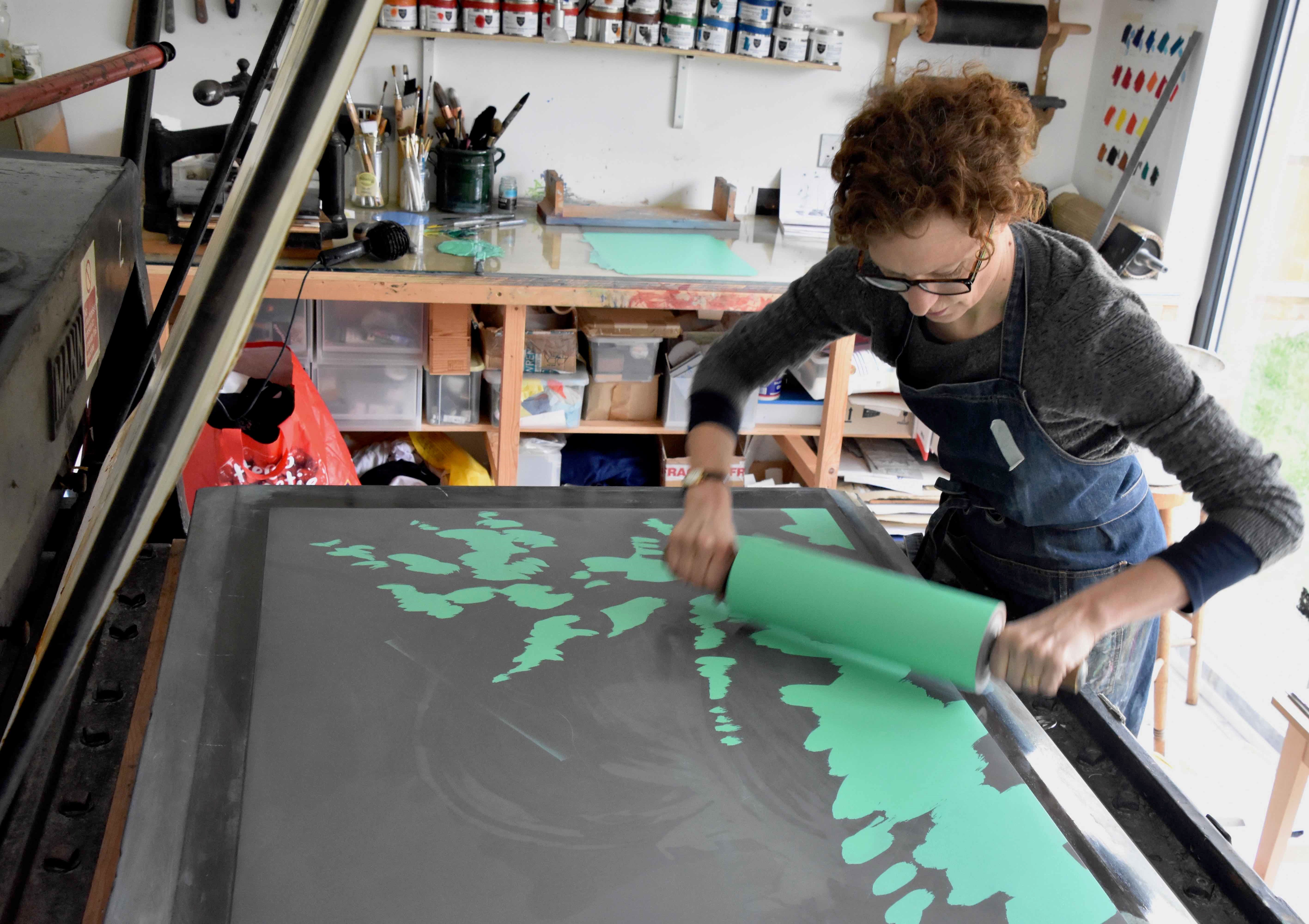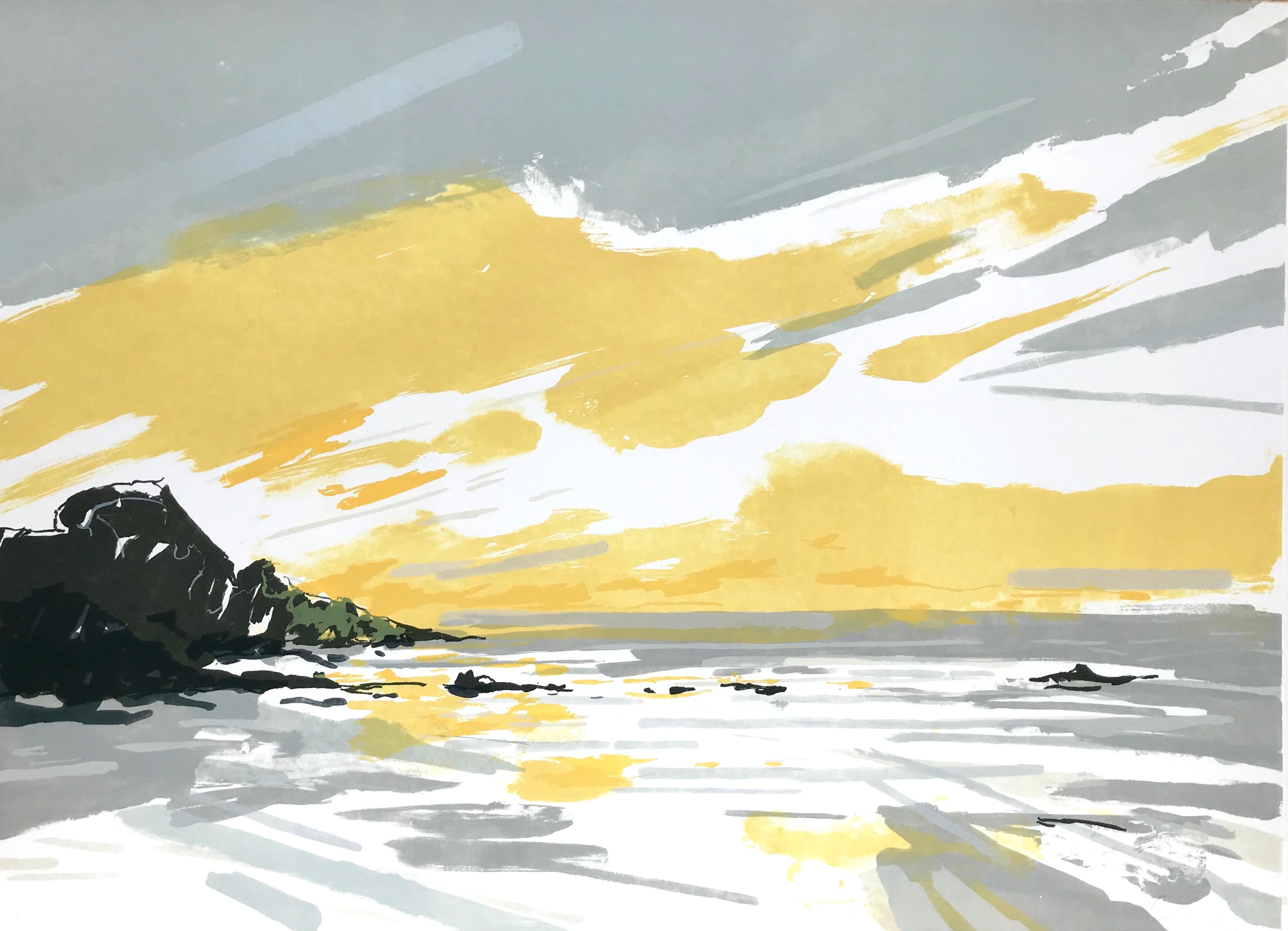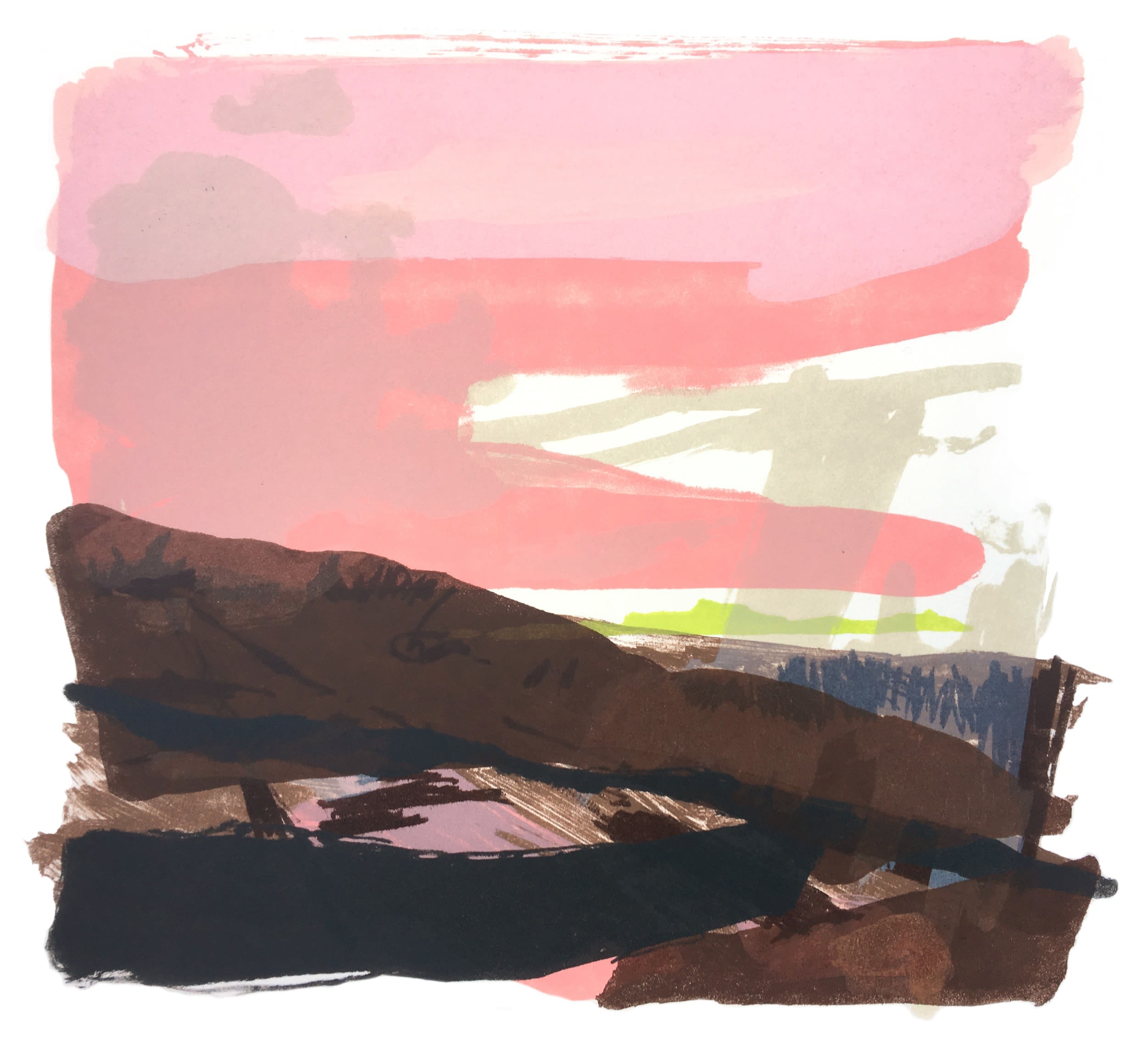The final artist in our International Women's Day Series is Rachel Gracey. Using Lithography and relief printing, Rachel's work emphasises the spatial relationships between natural forms, and the changing experiences of the familiar, articulating a sense of place, identity and memory.
Interview: Matilda Barratt in conversation with Rachel Gracey RE.
What first attracted you to printmaking, and to lithography in particular?
At 19 I was shown a plan chest draw filled with Jim Dine etchings. Having been a keen sculptor and avid drawer I was incredibly surprised and blown away by the intensity and freedom of marks he made on paper using print. Seeing these and a collection of monumental Abstract Expressionists’ prints nearby, my interest in Printmaking was launched. Unused large litho presses at Art College caught my attention and the beginning of a lot of experimentation ensued.

Lithography is a very physical and often drawn-out process – I understand that with your work in particular, it can take weeks for you to reach a finished product. It must take a great deal of patience! Could you tell us a bit more about your process?
Learning to print using lithography has taken many years to grasp. It is a slow process but I find it incredibly absorbing. My technique is to print one colour at a time. Each colour has its own plate. These plates begin greaseless. Marks are made, painted or drawn, with greasy crayons, pencils or liquid tusche; no biting with acid or cutting with tools. There follows a process using chemicals, water and black non-drying ink to strengthen the image, protect the plate and prepare the image for proofing. Gum Arabic is the final layer before the plate is ready to be printed with colour. Cleansed of all grease and wiped with water the plate is ready to be rolled by hand with a thin layer of ink. Whether fine delicate lines, washes or dense flat areas, the image magically appears as the ink builds up, and I print this on one piece of paper. The wiping, rolling and printing is then repeated and the first colour of an edition of lithographic prints is established. To develop my image I begin work on another plate and go through the whole process again. I like to use 7-9 layers of colour for each print. However, in order for there to be a final piece I have to be happy with the images on each plate, how they over lay onto each other, and also the effect of the new colour over the previous ones. Many prints end up in the bin as the harmony of these three does not work.
I like to sketch in the same way, layering one colour on another. However, merely drawing is not enough as I like to be physically involved. Lithography has become very naturally, if exhaustingly, a means of taking my drawings further.
What is it about the landscape that inspires you? What do you hope to capture with your work?
I love the power of nature. Whether the landscape is a local tended park or more recently the rugged terrain of California, I am attracted to the transformation and variety of the created world. Its energy, form and colour is fascinating. I respond to what I see by trying to capture it and hold it as a memory, or a journey; to evoke thoughts of beauty, tension, drama or pure simplicity.

What does a typical day look like for you? (If there is such a thing!)
On an art working day, having packed off the family for school and work, and made sure Giacometti, our Wire Fox Terrier has had a walk, I go to the shed at the end of the garden. This is where I’ll spend whole days looking over my sketches, redrawing, planning, prepping and printing. Some days I’ll be using a huge Mann Direct press printing large lithographs; other times all I’ll have to show for a day’s work are a mass of colour swatches that aren’t right. Regardless of the outcome, time flies.
Giacometti - what a great name for a dog! This leads me onto my next question... Are there any artists that you can point to who have most influenced your work?
I remain very influenced by artists working in 3D as much as 2D: the grandeur of Anthony Caro’s welded steel pieces, the spaces created and distorted by Alexander Calder’s mobiles, the colour and playfulness of Matisse’s cut outs, Picasso’s rich absorbing lithographic drawings. Also I admire the masterful colour mixing of Annabel Gault. Her ability to create a sense of place is wonderful.

What would your advice be to a young aspiring artist?
Read lots, visit exhibitions regularly, keep an open mind but also stay focused on your own direction. Culture and movements can be persuasive; be aware of them and try and find your own voice. And if you love art you’ll never need to be encouraged to work hard.
More like this on the Blog...
Read: International Women's Day Series: Gertie Young
Read: International Women's Day Series: Jill Leman
Read: International Women's Day Series: Nana Shiomi
Read: International Women's Day Series: Julia Midgley
Read: International Women's Day Series Sally McLaren
